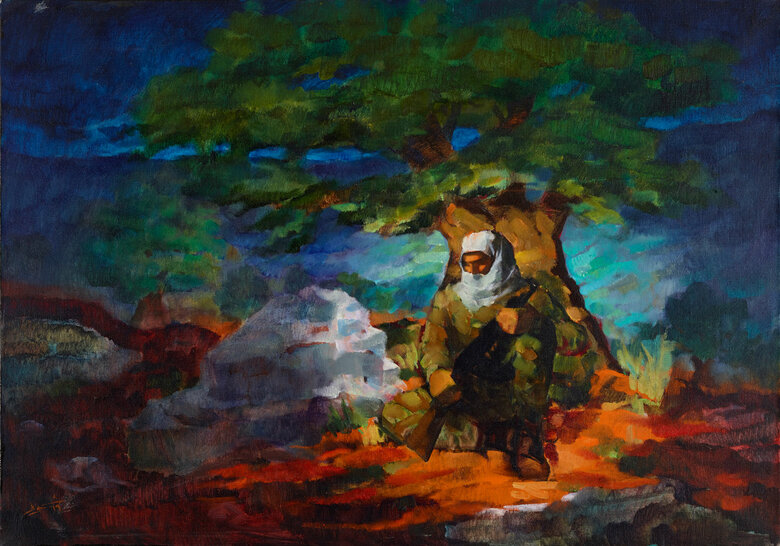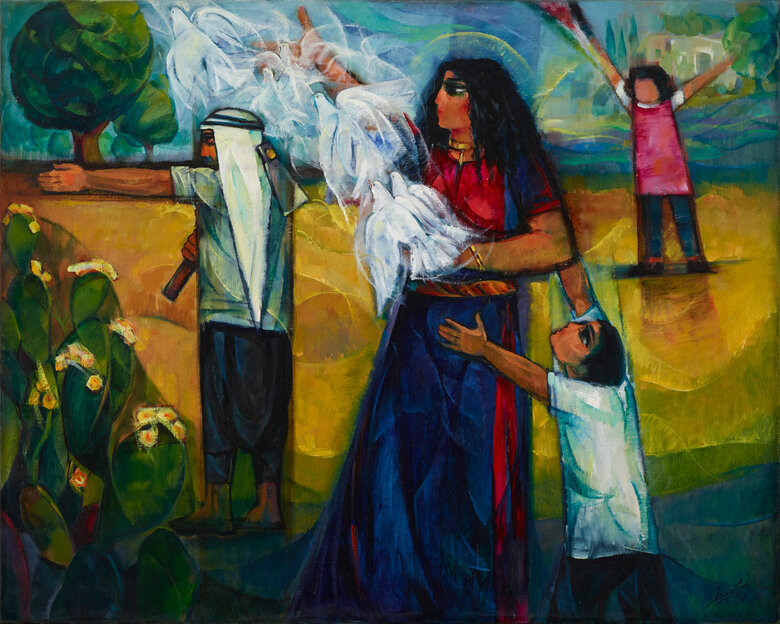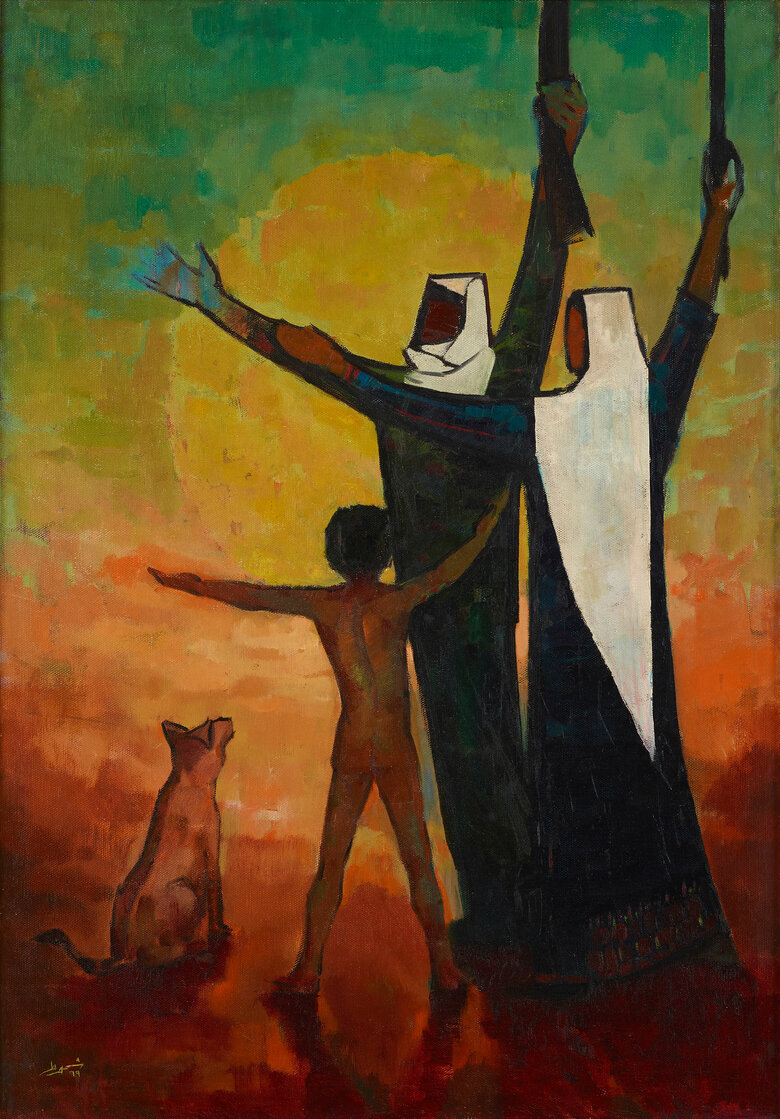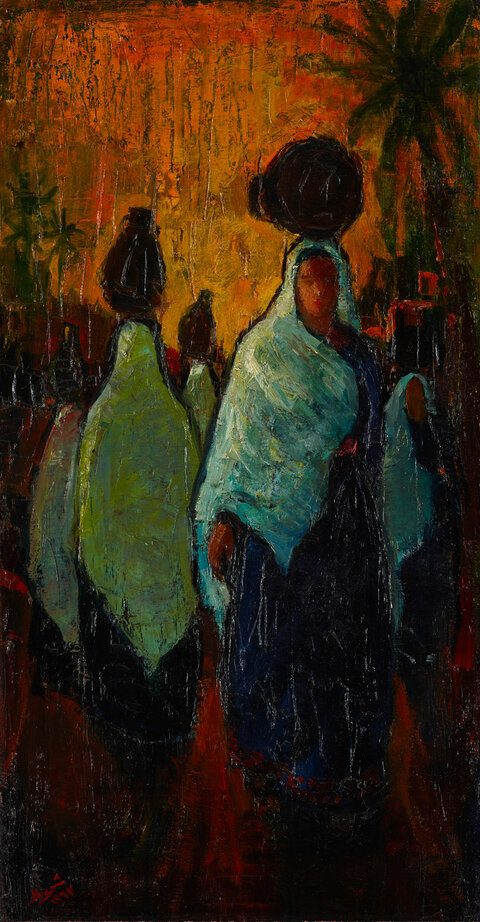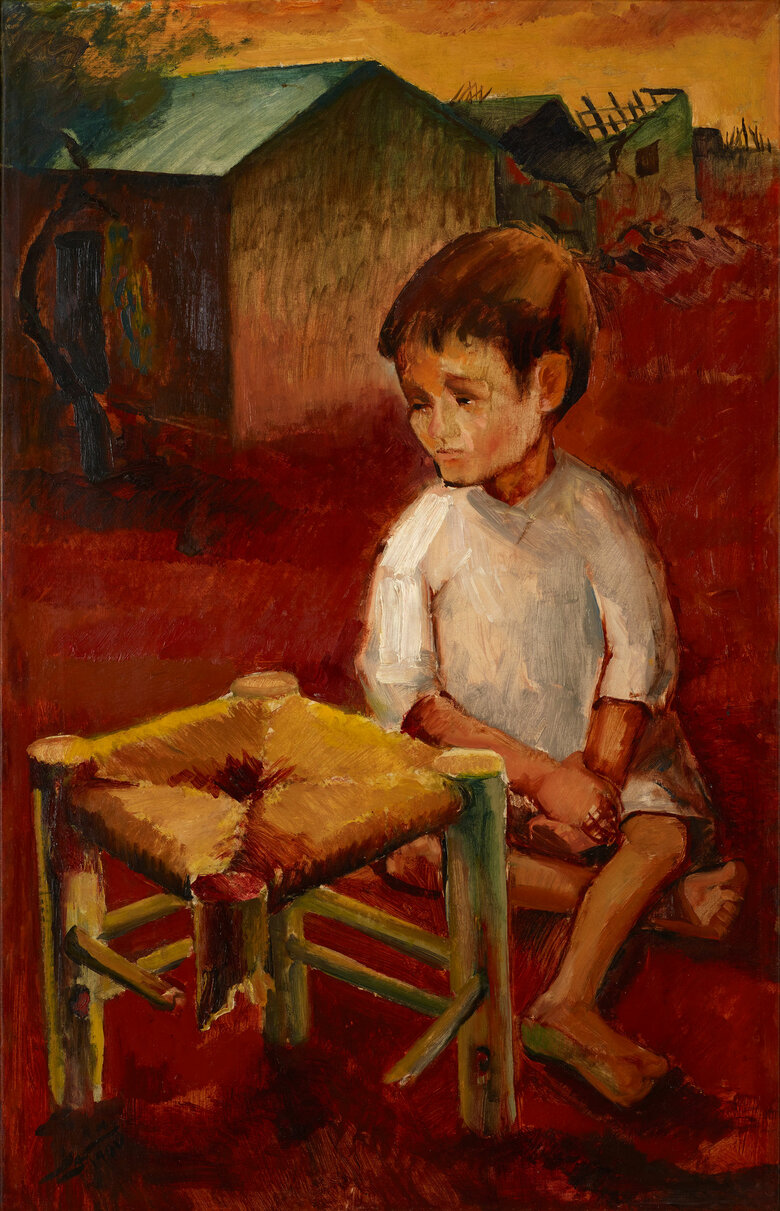The Glow of Al-Intifada, 2001, by Ismail Shammout narrates the story of the Second
Intifada, which began in late September 2000. Shammout employs dynamic, bold
strokes that animate the Palestinians figures in the bottom right corner, while the
blue figures of the Israeli forces on the left are condensed and undifferentiated as
they extend into the bulldozers destroying the land. He uses a multitude of colors in
marking out the Palestinians and the background trees and houses of the village.
Other marks of vibrancy are both the Palestinian flag, and the burning fires,
accentuating the main underlying struggle.
The painting employs visual strategies reminiscent of Mexican Muralism. In particular, it prioritizes dynamic composition to give a sense of urgency in its depiction of a historic event. Shammout also utilizes narrative storytelling techniques in which the painting presents a sequence of events; here, for instance, the Palestinian people are all united in their resistance of the aggressor, and are optimistically victorious in their efforts, as depicted in the left upper corner by them rising together and holding the vibrant Palestinian flag. Symbolism and allegory are a recurrent aspect of Shammout’s artistic repertoire.
In the context of the second Intifada, propaganda art, meaning art that is meant to
convey a particular viewpoint or message, emerged as a tool for expressing political
and nationalistic sentiments, reflecting the Palestinian struggle for
self-determination, resistance against Israeli occupation, and the desire for
independence. Various forms of visual media, including paintings, were used to
convey messages, mobilize support, and memorialize events.
Signed in Arabic and dated in English on the lower right front



-Front-edited.jpg)
-Front-edited.jpg)
